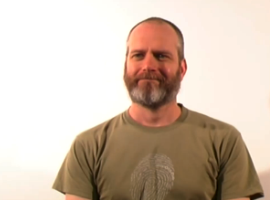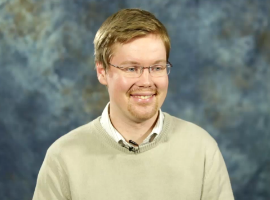InfoQ Homepage Real Time Content on InfoQ
Interviews
RSS Feed-
Yao Yue on Making Twitter's Pelikan Cache Fast And Reliable
Yao Yue explains the motivation for building Twitter's Pelikan cache, how Pelikan differs from other caches, what to do and what to avoid when building reliably low latency software, and much more.

-
Andrew Sorensen on Real Time Programming, Live Coding Music, Memory Management
Andrew Sorensen explains live music coding with Extempore, the challenges of real time programming, garbage collection, static analysis to determine real time code meets its deadlines, hotswapping code, and much more.

-
Nathan Marz on Storm, Immutability in the Lambda Architecture, Clojure
Nathan Marz explains the ideas behind the Lambda Architecture and how it combines the strengths of both batch and realtime processing as well as immutability. Also: Storm, Clojure, and much more.
-
Tom Banks on the IBM WebSphere Application Server Liberty Profile
When he reaches out to developers, Tom Banks tells them about cool new technologies they can implement. Using these cool new things they can do with IBM technology to try to make them think a little bit outside the box when it comes to enterprise software. So that they can innovate using IBM software and these new spaces created with their WebSphere Application Server Liberty Profile.

-
Francesco Cesarini and Viktor Klang on the Reactive Manifesto
Francesco Cesarini and Viktor Klang explain the motivation behind the Reactive Manifesto and what exactly it brings to the table. Also: what Erlang and Scala/Akka can learn from each other.

-
Darach Ennis on CEP, Stream Processing, Messaging, OOP vs Functional Architecture
Darach Ennis explains the lessons learned from the Complex Event Processing community, reactive programming, the challenges of messaging on mobile platforms, OOP vs Functional and much more.
-
Rupert Smith on Low-Latency Java Programming, FPGAs
Rupert Smith explains how to write low-latency code on plain JVMs (not realtime VMs) and how to avoid GC pauses. Also: how to exploit the capabilities of FPGAs to improve performance.

-
Hardware friendly, high performance Java-Applications
Martin Thompson and David Farley discuss how to use the scientific method to create high performance systems by measuring performance and adapting the implementation to approach the limits of current hardware. The disruptor architecture is an open sourced result of their work at low-latency, high throughput systems for the retail trading platform of LMAX Ltd.

-
Ulf Wiger on Robustness and Scalability in Erlang
Ulf Wiger explains the origins of some of Erlang's core principles and how they're even more relevant today. Also: a look at the strengths of Erlang, Clojure and Haskell.
